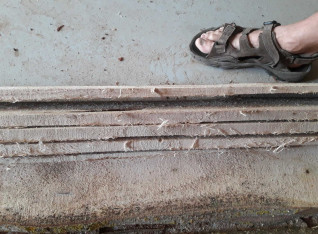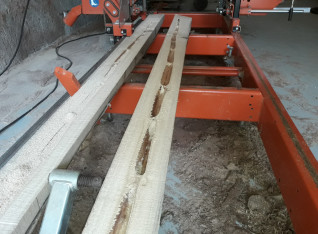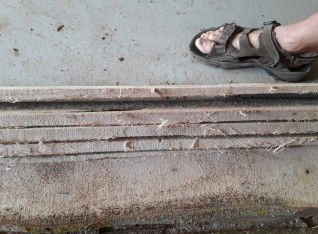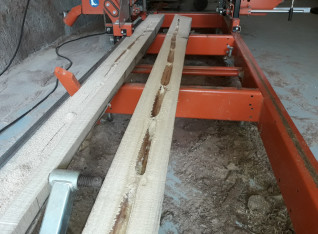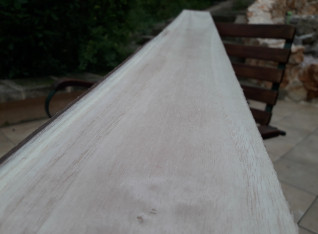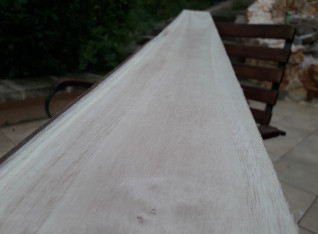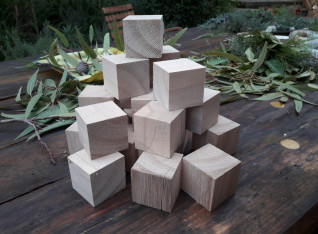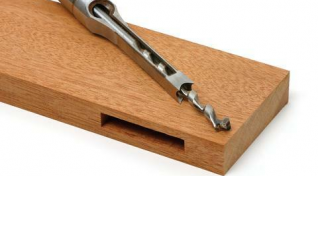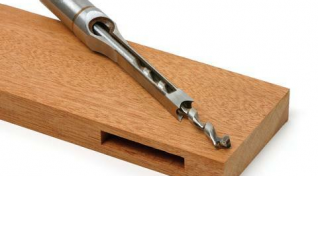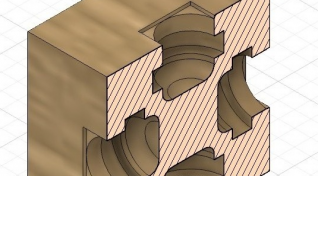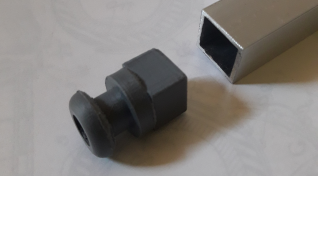Paulownia wood, cubes and springs
December 17, 2021The idea to create a sub-tropical finca
When we bought La Mina San Cayetano in 2012 I had a great idea of transforming the whole terrain into a subtropical jungle. We had and have an unlimited supply of water as being 'King of the Water' in the region. All we had to do was bring this water the plants and trees which had to be planted. When visiting garden centers we could not resist buying young trees of Avocado, Mango, Litchi and such.
Creating a tropical or sub-tropical atmosphere is not just about a high temperature, it's also about humidity and light. Most young tropical trees like to be more in the shade than in full sun. This is what they are used to growing up in a dark jungle where only the tall trees reach the full sun. Humidity is equally important, many plants and trees absorb water through the leaves apart from the roots.
So water was no issue, temperature may be a problem, especially in the Winter period. For many plants it's not the high Summer temperatures which makes them like or not like where they grow, but the low temperatures in the Winter period. Like the Mango tree for instance. When the temperature gets below 10 degrees Celsius it will drop its leaves. When temperatures rise it will get new leaves, but the setback has been so severe that it will never thrive. Most semi-tropical plants and trees stop producing new leaves in the Winter period, like all palm trees and ficus varieties.
Then humidity... this needs to be high, super high. But how to block the sun on Mallorca. A huge umbrella over our finca would be good idea, but how to achieve this? I don't know exactly when I came across the Paulownia Tomentosa tree, but I believe even before we bought La Mina in 2012. I have written about this tree before and some old photos have been included in this post about this tree. Just a quick refresh of the knowledge about this special tree: the word Paulownia comes from Anna Paulowna, a Russion princess who married the Dutch King William II around 1830. A Dutch biologist named the tree after her when he first determined this tree in China. Other common names for this tree are: Royal Empress Tree or Kiri Tree.
Normally trees grow slow, but this tree grows very fast. Under ideal circumstances - water, temperature, humidity and soil - it will grow 15 meter tall with a trunk diameter of 35 cm going straight up in about 13 years. If you plant trees closely together they will all fight for the light and grow tall, leaving darkness below, so branches below the crown of the trees will not continue to grow and die off. This also accounts for the Paulownia tree, even more than for a pine tree as this has needles while the Paulownia tree has huge heart shaped leaves.
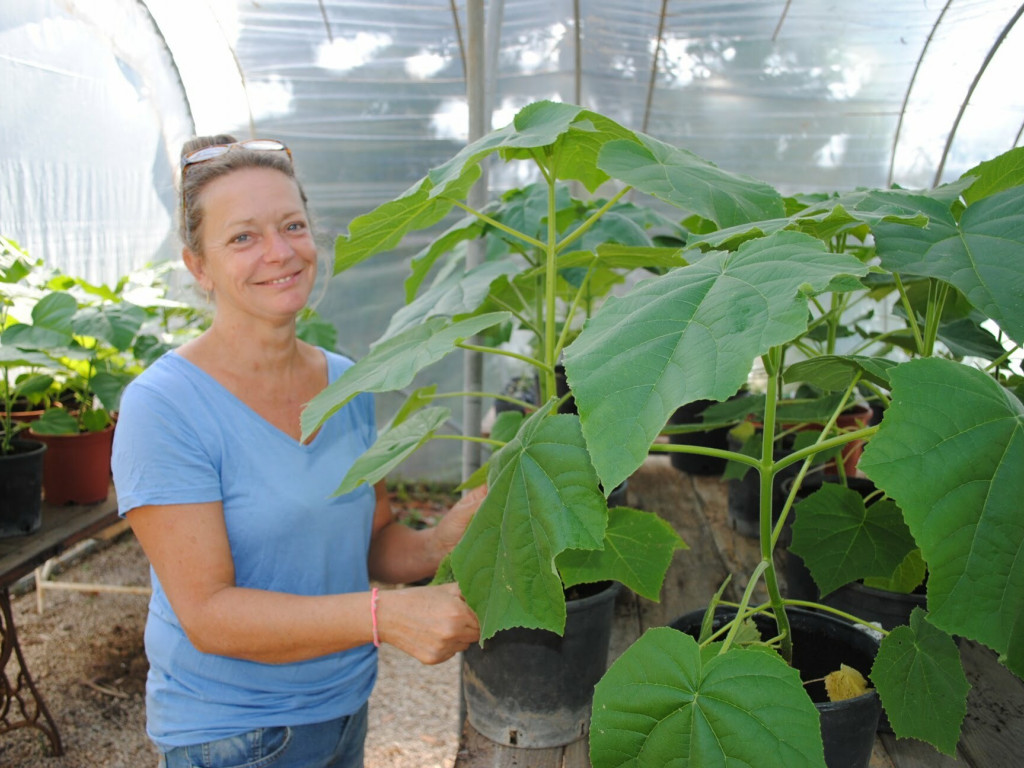
On various places around the island you will notice small plantations of Paulownias, which are very easy to recognize because of their height; they stick out in the traditional landscape. We collected seeds from Paulownias just outside Inca where a line of these trees grow inside a finca, but overhanging outside the fences. The seeds are special in the sense that these are very small, fluffy and lightweight. It could be used to fill your pillow with these seeds and it was used as padding to protect China porcelain from breaking during shipments. The seeds come in seed pots which break open in November / December. If I would have to estimate the number of seeds per seed pot I would guess close to 50,000.
There are various ways of germinating the seeds. My preferred way is to spread seeds on a wet tissue in a closed tray where the light can come in. After about a month you will see tiny little roots and green spots which are the first leaves. Then carefully transplant these using a pair of tweezers and push the roots a bit in lose potting soil. Soon after it will start to grow and grow and grow (see again the photos taken in the former greenhouse).
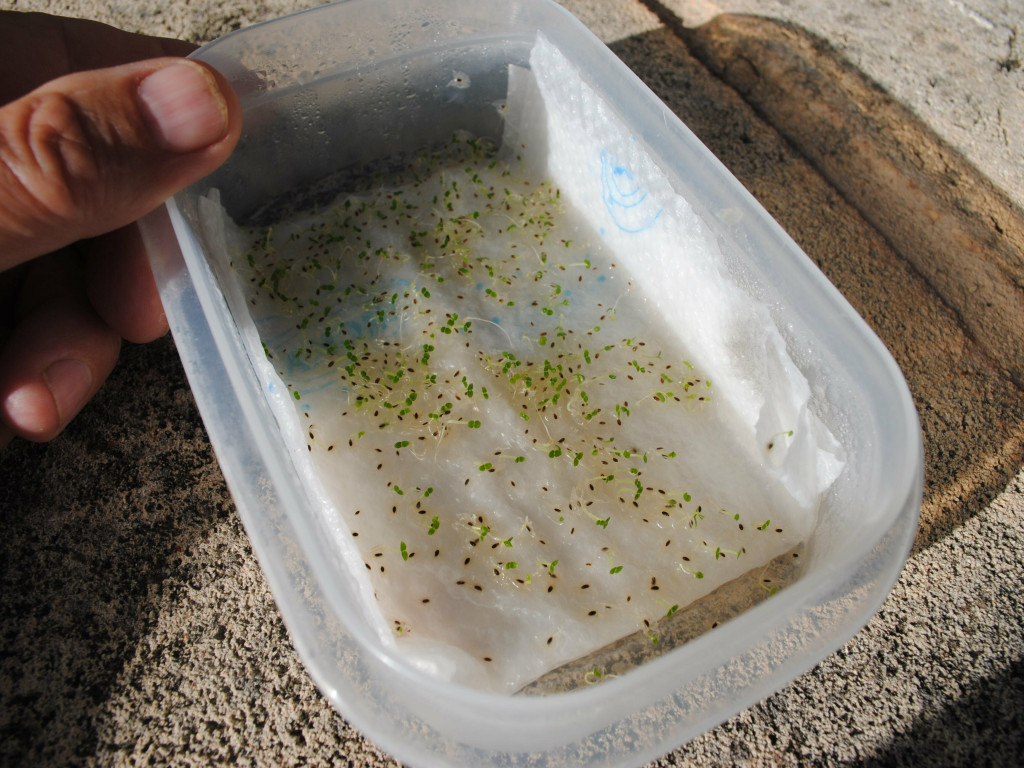
After a couple of months we had about 100 young trees of about a meter high, which we finally planted in the jungle to be. We installed an irrigation system with a dripping system consisting of thousands of meter of tubes. The whole infrastructure was so extended that we needed to install a pumphouse with 8 different groups and a timer to schedule the watering. Not only we had planted these Paulownias, but also Mango, Avocado, Paperbark, Jaccaranda, Ficus Benjamin and Ficus Australis, Ginko Biloba and more.
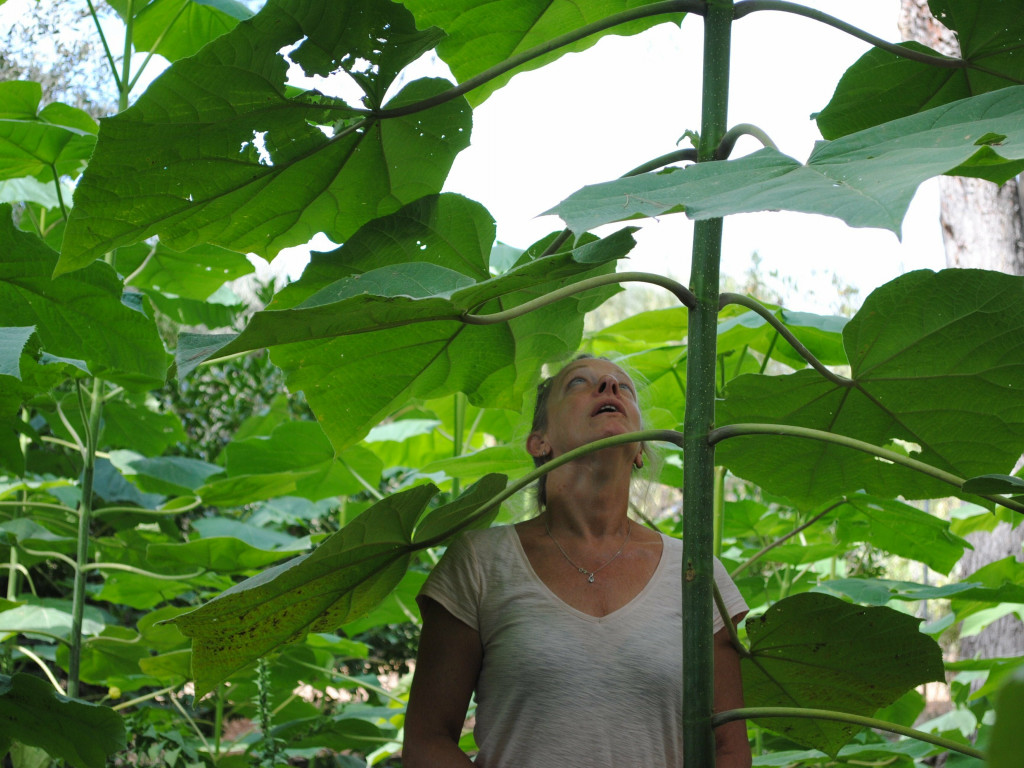
The young plants continued to grow well for a while, but when Summer really hit us again in July and August they suffered due to lack of water. We increased the watering but this did not make a difference. The tallest of the trees suffered the most, especially in the top of the trees. What went wrong and how could we have prevented this from happening? The big number one explanation is that there is not enough soil for the root system to develop. There is just a layer of max 50 cm of soil, on many places not even 10 cm of soil. The roots of the Paulownia trees were not able to grow through tiny holes in the bedrock below. In contrast to this the pine tree can, these just keep searching for a hole in the rock, grow through it downward, expand and even break the rock ! Paulownias however need a few meters of rich and lose soil.
The second main cause of failure is that the level of the ground water is too deep down and the water runs away through the rocks too fast. Even watering every hour did not make a difference, the leaves kept hanging down due to lack of water, lack of water pressure to make the big leaves firm.
The whole tropical jungle project failed due to the above reasons, not only for the Paulownias, but in fact all trees we planted, maybe except a Date Palm tree. I did try a different watering system based upon large sprinklers which I attached 5 meter high in pine trees, but this resulted in grey leaves on the trees due to the high concentration of lime in the water. Pecan trees suffered most from this, but basically all trees, as it blocks the sun and creates a layer on top of the leaves which prevents the leaves from being able to breathe.
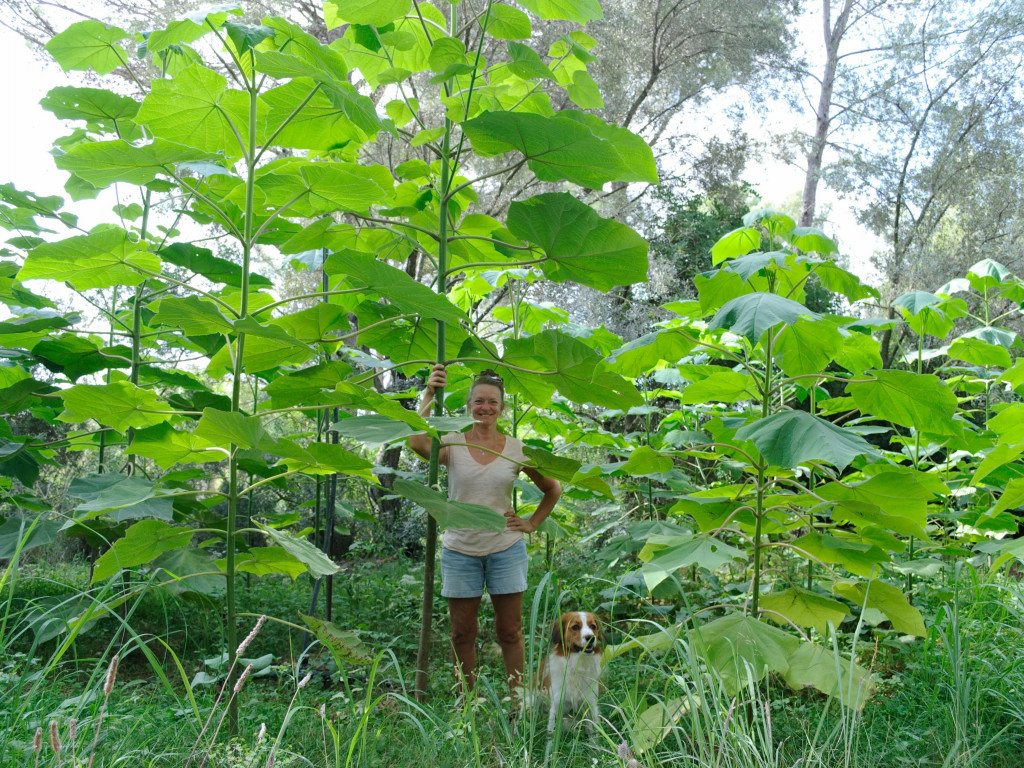
There is maybe one spark of good news in all this sadness: a second batch of young Paulownias was transplanted to a place near the bottom gate which are still doing relatively well. I remember that the former owner of La Mina told me that this was a good place to make a veggie garden as there was enough good soil. After 5 years these Paulownias are still alive and still growing upward. We have installed a few sprinklers in this area and in between the Paulownias we have planted some Avocados which are doing also ok.
Paulownia wood
Paulownia wood is sometimes compared to and seen as the new balsa wood: it's lightweight, has a homogeneous structure, has no cracks in the wood and does not have any knots. Besides this the wood can be bent easily, so it makes it suitable to make cores for boats for instance.
I was wondering what the final goal of the small plantations of Paulownia wood was. I had been told that the wood would be chipped and used as biomass for wood-burners. This could not be true, this would be a waste of beautiful wood, which could be used to make furniture and boats etc. After a bit of searching online I found a guy on Mallorca who owns a few plantations of Paulownias, Miquel Galmes. Last year I already contacted him about his wood and I shared with him my idea to make a Canadian Canoe out of this wood and how cool it would be to make this out of wood which comes from the island. He liked the idea, but we never met until this year. I finally met him at one of his plantations in Manacor where a stack of Paulownias was laying near the road. There were still many trees growing, all with a trunk diameter of around 25 cm. Miquel told me that the trees being cut were forced to be cut due to a mini tornado hitting the plantation. These trees were not ready yet to be cut as they needed to grow for another few years. We discussed the wood and I showed interest in milling some of the wood as a test to see what came out of it. The cut trunks where still too green/wet but he had some wood which was cut longer ago. He gave this wood to me for free and he said that he would be interested in a barter deal: in return for making a Canadian Canoe for him out of Paulownia wood, he would pay me in Paulownias. I said I would consider this offer and went home with a few Paulownia logs on my VW-Transporter.
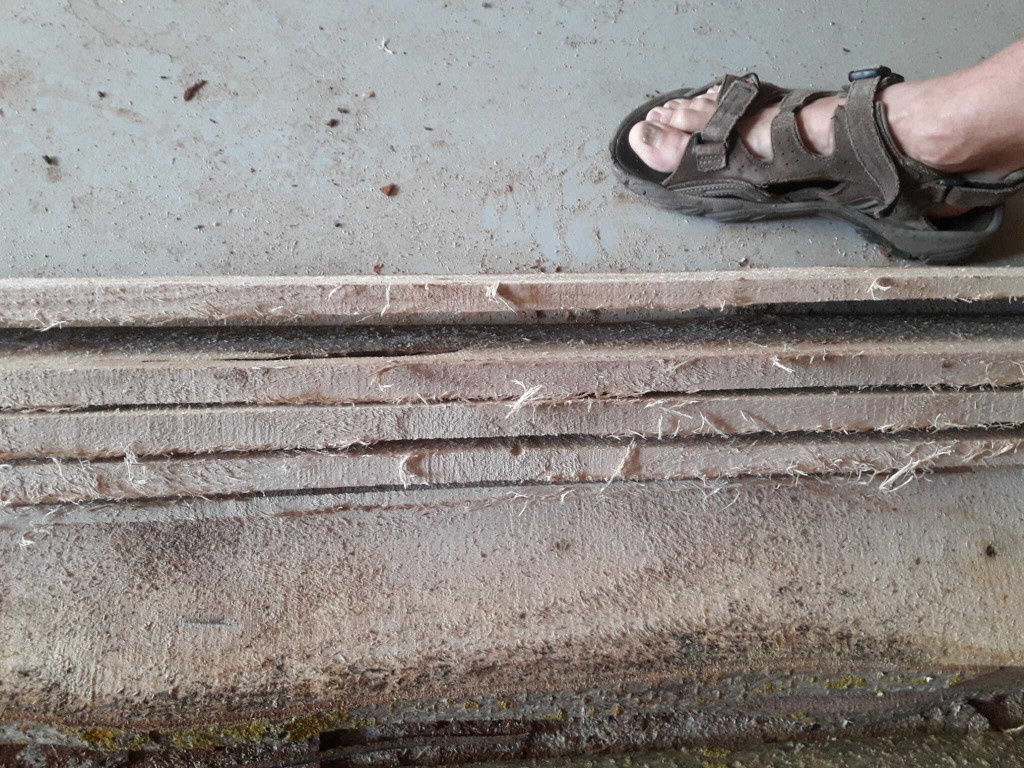
I milled one of the logs, but it proved impossible to saw a single board with the same thickness. The wood warped during the milling process. Somehow there was a lot of tension inside the wood. Besides this the actual cut was very rough. Maybe the saw blade was not sharp and therefor broke the wood instead of cutting nicely through it. I put the milled boards aside and intended to make firewood out of it... well... more tinder due to its light weight.
Another issue with the wood was the fact that there's a hole in the center of the trunk, separated in sections like in bamboo wood. The hole will always be there I believe and not grow solid with wood, so you have to take this fact into consideration when milling the wood as the center part is not usable. Because of this hole which nobody wants the trunk size has to relatively wide - say 30 cm in diameter - in order to get a decent amount of usable wood out of a trunk.
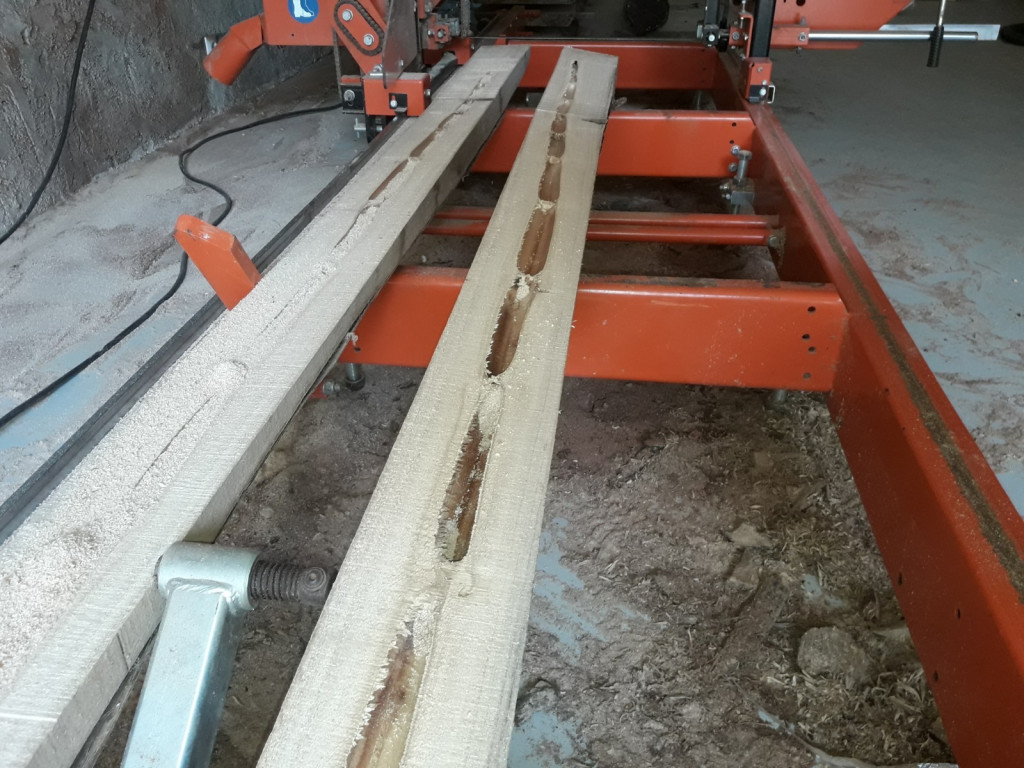
A few weeks ago I had to go to Manacor to buy a special drill. I had bought some walnut trunks of Miquel but only after I threw in 2 glass Xmas trees of Ans. I still needed to deliver these to him, so I called him up and agreed to meet at the same place as before: near one of his Paulownia plantations. He liked Ans her creations very much and spoke again about all trunks laying there beside the road. He was still interested in the barter deal and I asked him how many trunks he was willing to offer in exchange for a canoe. He said that I could take them all, all 85 trunks, between 5 and 6 meter in length, thickness 25-30 cm on the thick end and 20-25 cm on the thin side. I had a good feeling about this and offered him my hand which he accepted. He said that no contract was needed, he trusted me on my blue eyes.
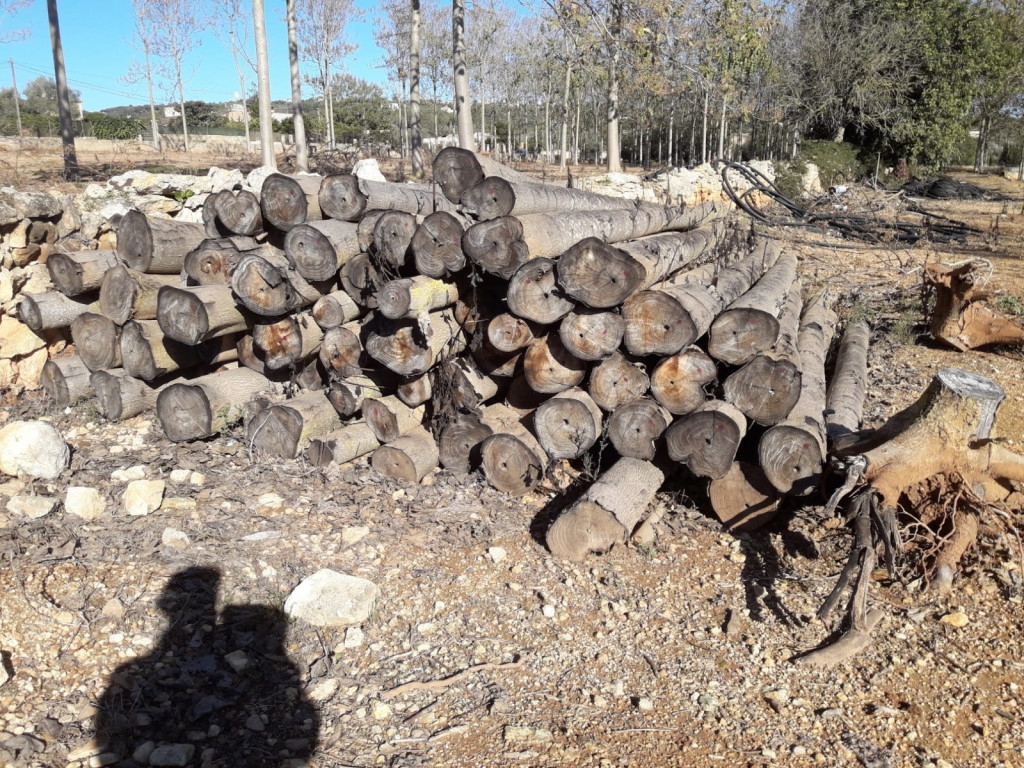
Meeting Omar
I met Omar through his brother who offered his help on our finca through WorkAway. They both came here on a day this past Summer to discuss the possible help stay. This did not pan out, but I showed them around a bit and especially Omar was very interested in all my wood activities as he had just hired a small workshop outside Selva where he wanted to start working as a carpenter making furniture and such. There is an old shoe factory just outside Selva in the direction of Caimari. The shoe factory is already closed a long time ago and all the shoe making machinery is still being kept there as kind of industrial artifacts with the intention perhaps to open this up for the public as a museum. All what remained till date is the shoe shop bearing the same name as the old factory: Kolflex. There is still a lot of unused space and a small part has been divided into a few small workshops of which only 2 are rented out, one to Omar and one to someone working with metal.
A few weeks after I had met Omar for the first time and paid him a visit after bringing away our garbage to the Caimari greenpoint of the region. His workshop was close to empty, he was busy making a workbench and there was no wood working machinery in the workshop. We talked a bit and Omar offered his help for milling trees if I needed it.
The following week I took him to my 'Woodfriend' just outside Inca. I have talked about Tomeu before in a former blog. Already a few times I have made a barter deal with him where I mill a few trunks for him in return for receiving wood which I need. I bought some wood and Omar assisted me on getting it in my van. Much later Omar told me that he went there again the following day offering his help for free in order to learn about working with wood. But this lasted not more than one day as Tomeu let him sand wood the hole day and nothing more.
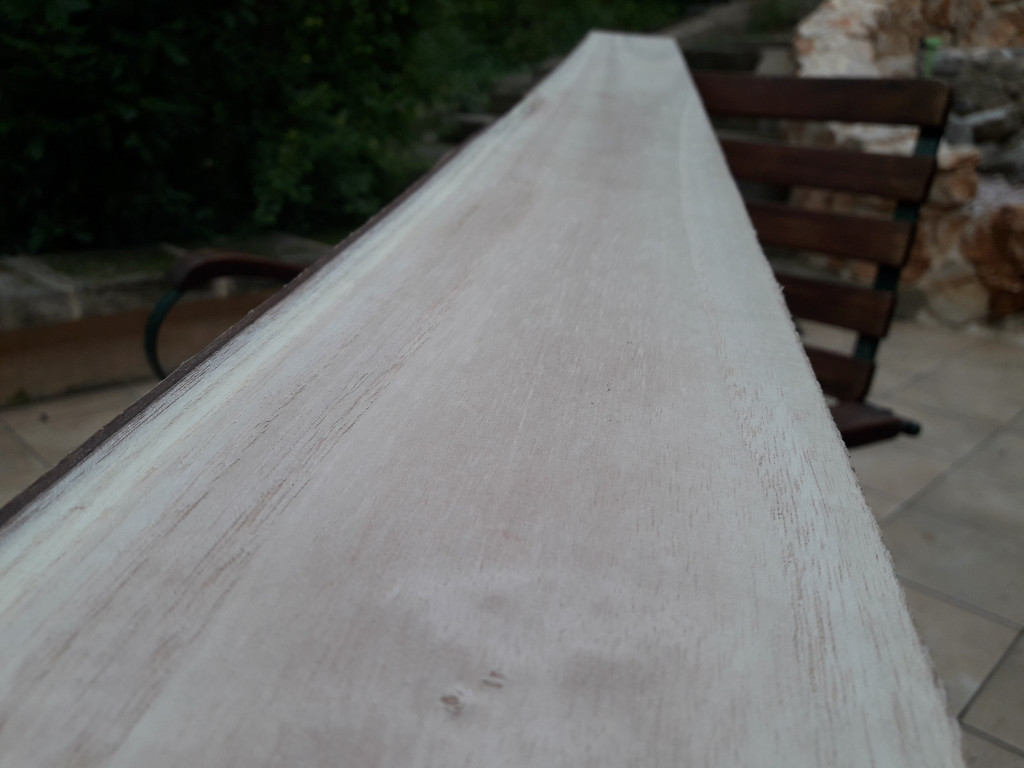
A few months later I visited the workshop of Omar again, interested to see if there were any positive changes to see. It pleased me to see a neatly organized workshop with a new professional planer and band-saw machine and many smaller hand-tools. He did not have any paid orders, but was working on some pieces of furniture for himself. When he told me about his new planer and what a smart system of knives shave off the wood (not just a straight blade, but many knives going round the axle like a serpentine) the idea came up to try to run a board of Paulownia wood through this planer. I had not yet cut the boards into small pieces of firewood and there were a few parts which had roughly the same thickness.
The next day I brought a piece of this wood of 1.5 meter and he ran it through his planer a few times on both sides. The result was amazing. The wood was very smooth, had a nice light color (like balsa wood) and it was of course very light. I did not expect this at all. I took the piece of wood home and showed it to Ans. Then I started to think 'what can I do with this fantastic wood'. The idea came up to make cubes of the wood and create design lamps of it. As the wood is so light you could make huge lamps of small cubes and still not create a lamp which you cannot lift.
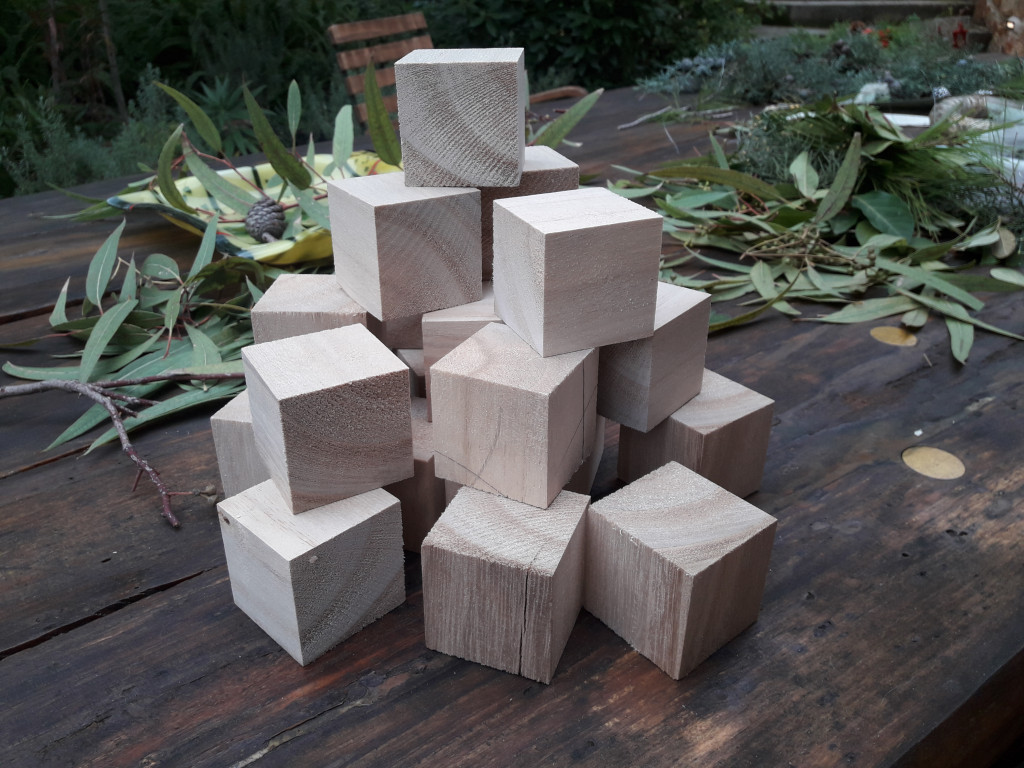
On request Omar sawed cubes for me of 5 x 5 x 5 cm. I wanted to feel the cubes in my hands, play with it like a child would do, stack them, build something with it. I was obsessed by this super light and smooth wood. I needed to connect the cubes somehow, but not glue them together. There should be space between the cubes to make it less bulky.
How to connect the cubes
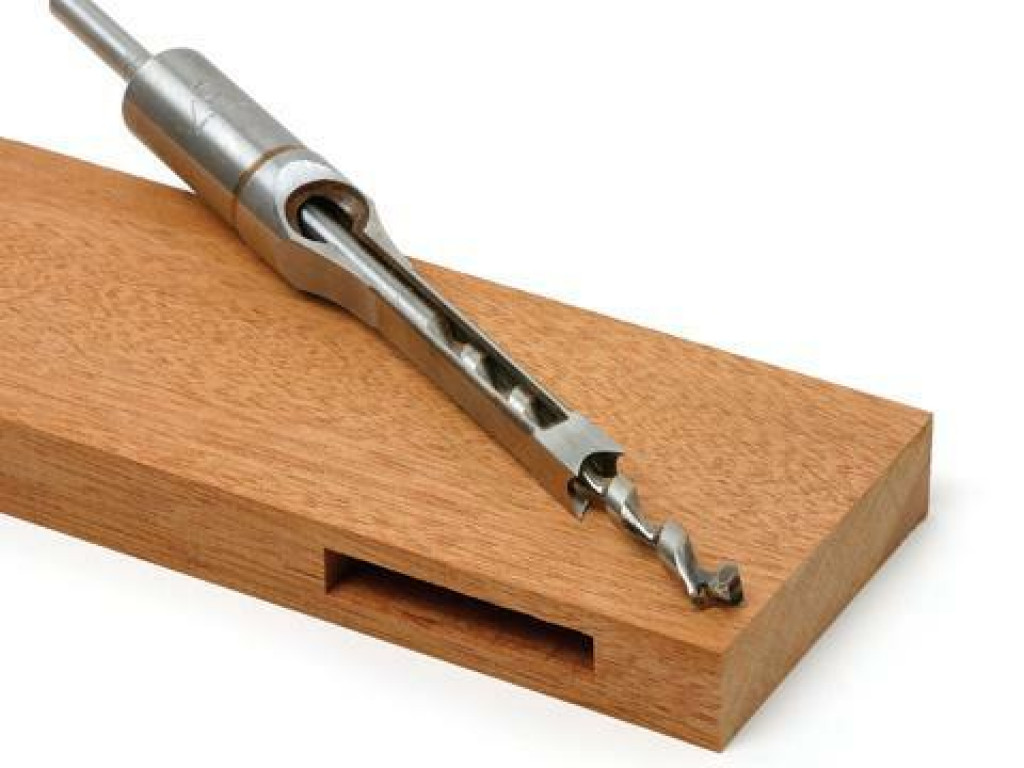
Indeed.... how to do this. I have always loved aluminum and in combination with this wood it could be very nice. So I needed to drill holes in the cubes and stick pieces of aluminum tube in 2, 3, 4, 5 or max 6 other cubes, as a cube has 6 planes. The type of aluminum tube that came to mind first was round, but this would not coherent with the cubism idea and with round tubes it would always be a bit more difficult to line the constellation of cubes in a straight order. So why not square aluminum tube, this would avoid the problem and it would perhaps be more esthetic. However, the problem with square tubes is that all drills are and go round. While this is true, I had seen square drilling holes recently being advertised somewhere online. I started searching on 'square hole drill' and I found many results. A machine making holes with this drill-chisel combination is called a 'mortiser' and these are being used for instance by carpenters to make holes in a wooden door where the lock is being inserted.
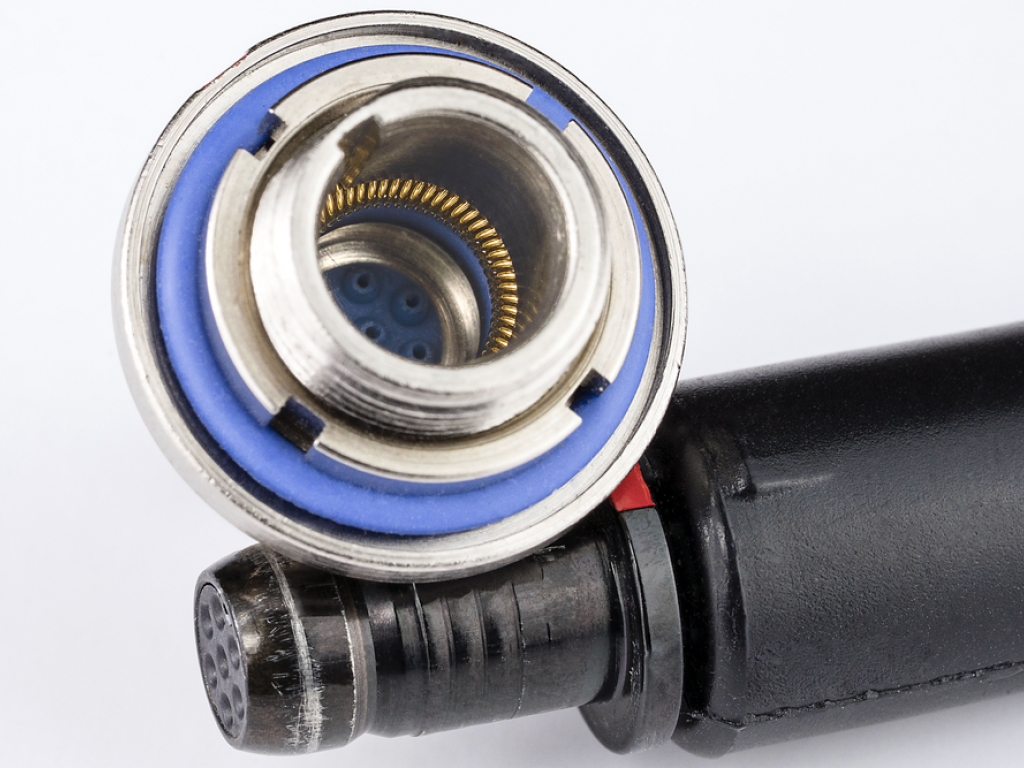
The next issue was: how to 'connect' the tubes in the wood. You could glue it inside the wood, but I would rather like to 'click' it in, a push-and-lock system. Then I thought about the frustration which every carpenter must have with connecting a dust extractor to tools. It's always a nightmare as all tool brands want their connection system to become the universal global connection system and so all are different. Name me the first carpenter who has never used duct tape to get a connection which holds for a while, and I will do 1000 pushups. Duct tape works for a while, but every now and then you will have frustrations. Surprisingly the problem can also occur with a dust extractor and a tool of the same brand, like with Makita. The end of the hose of the dust extractor of Makita is made of rubber and this must be pushed over a plastic piece of tube on my Makita rotex sander. It fits, but it is not a tight fit. Every once in a while the hose flips off which is very annoying. You can put a hose clamp around it, but come on... this is far from elegant and extra work every time you want to switch machines and if you tighten the hose clamp too tight the plastic can break.
Ok, I am getting off road now... the idea I had for a tight locking system between the hose of the extractor and your tool would be based on a click-and-lock system where an O-ring spring would lock itself in a groove. It's a common locking system since the early '90s when this system was patented (patent has expired as these are valid for only 20 years). I did not pursue with this idea, but for my cube connector I could use a similar system where an O-ring spring locks into place in a groove in the wooden cubes. This idea gained strength over the next days.
Fusion360
In the past I have had more ideas of small parts being made in mass numbers and I contacted Chinese companies for this. The first thing they will ask you is sending a 3D file, normally a .STEP of .STP file. Just a simple sketch or drawing does not work, you need to have this 3D file which shows all measurements without room for misinterpretations. A few month back I have bought not only a 3D printer, but also a powerful desktop computer - the first desktop in fact in maybe 20 years as I have always bought laptops since 2002. I need a powerful computer in order to run the CAD-CAM software Autodesk Fusion360 and since I do not even want this computer on my lap and it is much more affordable with a decent amount of RAM memory and it has standard 10 USB ports, made me decide to buy this bad boy.
The whole 3D setup with printer, computer, monitor and such was temporary installed in the Bad House. I cleaned up our desk in our house, removed the scanner/fax machine which we rarely use and installed the computer, 3D printer and 24" monitor on this desk. I am writing this post on the middle 24" monitor (some people wonder why I need 2 or 3 monitors... well if you have multiple applications open on your computer you do not have to swap between them). Learning how to work with software like Fusion360 or any professional software takes time. It's not rocket science, but there are so many features of which the majority is one, two or three steps down, that you must spend a ton of time before you can comfortably work with it.
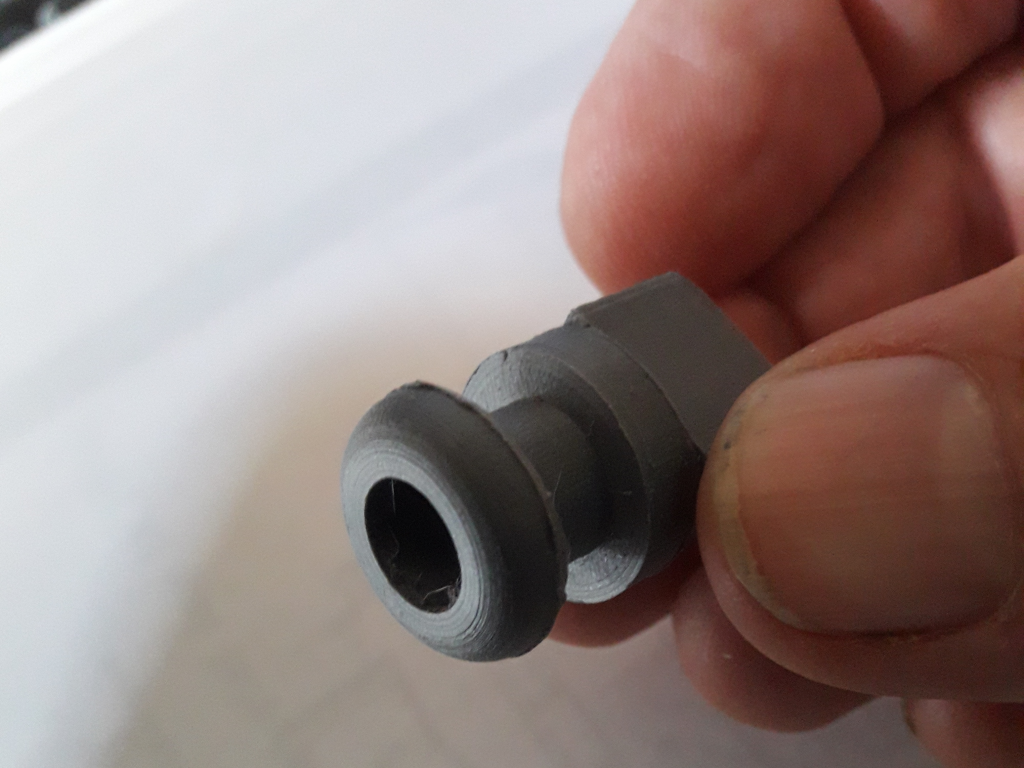
But I had to do it and right now. So I opened Fusion360 on my new computer with 32 Gb RAM and started to figure out how to create a cube and later the aluminum tube with the plastic caps on it. During these creations I watched a lot tutorial videos on Youtube. Although helpful, they rarely get to your point you want to see addressed. And time wise... you open a huge amount of registers in Fusion360 to find the right tool or function you need, lots to undoes and lots of unpleasant surprises like 'where has my model gone?'. Creating the square tube with the connector piece at the end took about 1 day and when I would have to create this again it would take me no longer than 5 minutes !
So now I had created a cube with a square hole in the cube which continues as being round after 5 mm and then the hole becomes wider for the groove inside the cube. And the plug going into the cube is the square tube of aluminum with the plastic tip connected which also has a groove. The groove inside the cube should be fitted with the O-ring spring. When you push the aluminum tube in the hole it should lock itself in place.
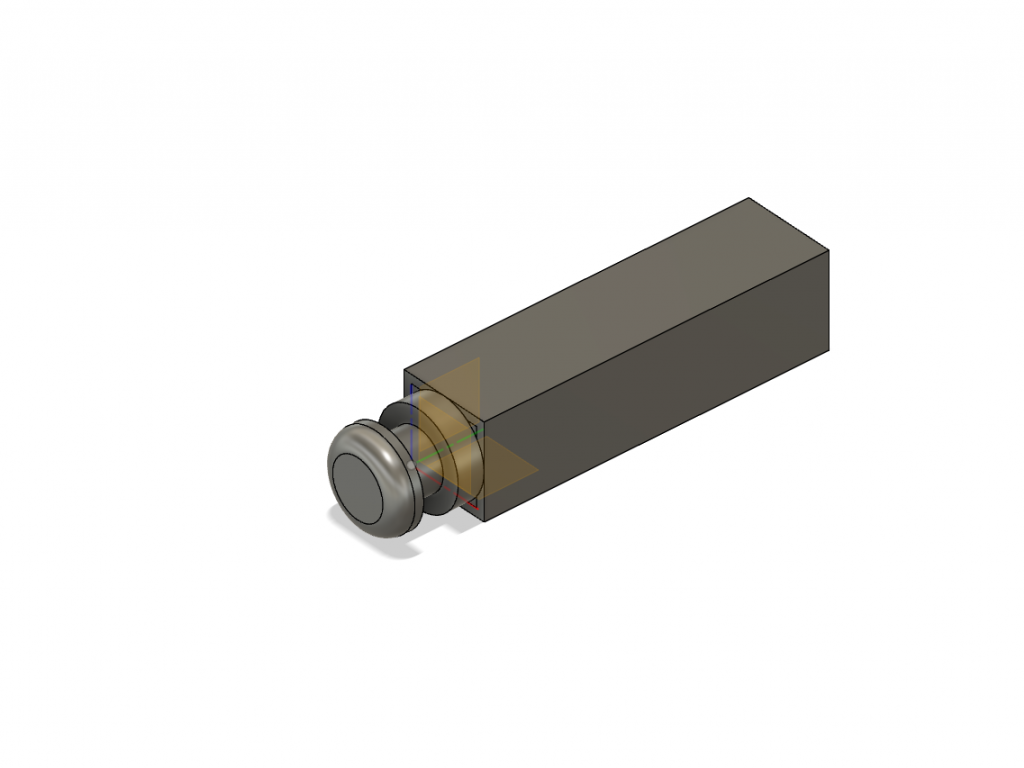
Chinese factories
For those who don't know yet: AliExpress is for the consumer and Alibaba is for business to business - both owned by the same company by the way. On Alibaba you can find everything, not just everything, no.... EVERYTHING. What I need most urgently right now is the O-ring spring as I had already made prototypes of the plastic insert on my Joseph Prusa 3D printer successfully. The type of spring I need is a 'canted coil spring', meaning that the turns of which the spring consists are not concentric round, but oval shaped. This is needed to 'cant' or 'slant' the ring when pressed. The turns will deflect or lay down and then regain their original shape again in the groove.
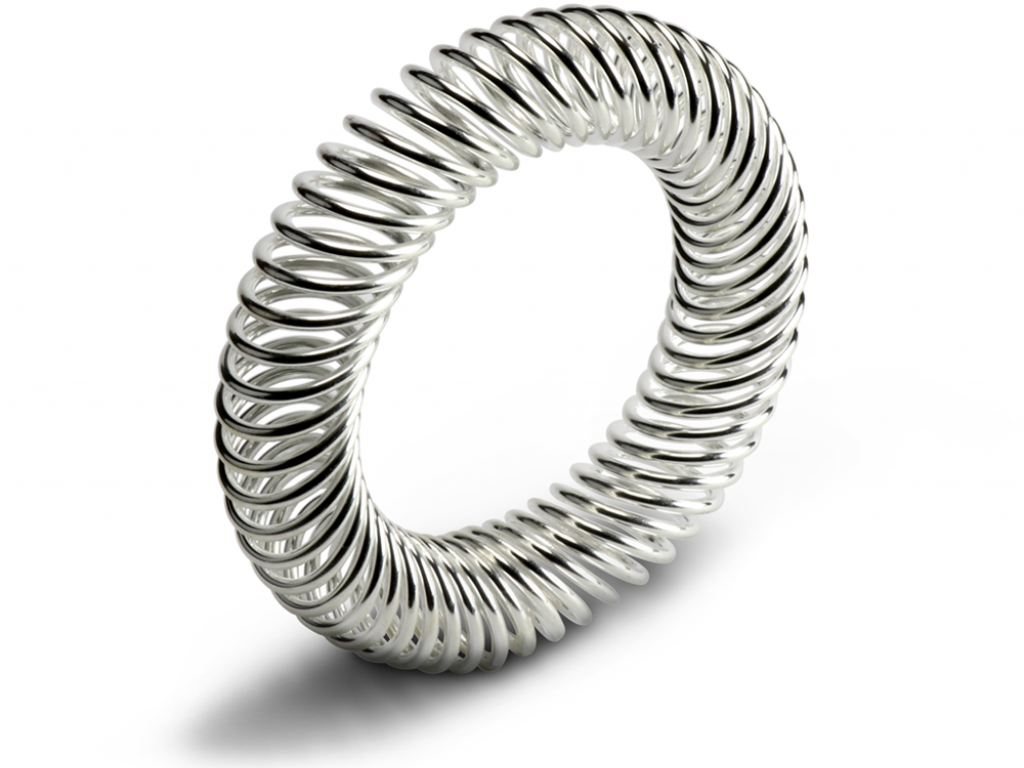
If you search on 'canted coil spring' you will find many factories who make these springs. I contacted 6 and one of them was superfast in responding and we started to chat on Alibaba. On their main page on Alibaba this company mentioned a price of $0.01 - $0.10 per spring with a minimum order of 1000 pieces. We discussed all aspects of the type of spring I need for my cube connector application. Many of the specifications I could not give like the wire diameter, how would I know ? Or which force should be needed to cant the spring for the plug to go inside ? My answer on both of these questions was that it should be not too easy to plug or unplug the aluminum tube from the wooden cube; a child of 4 should not be able to unplug it. This is something they cannot really work with, they want to get an answer as a number of Newtons.
Finally after many chatting and many misunderstandings which may be caused poor English on the Chinese side, we came to the stage to place a sample order. So I asked for the price and how many springs it would consist of. The answer was: $4.50 per spring, 40 springs, so in total $180. The unit price made me think.... 'how much would it cost per spring in a production run of 1000?'. The answer was: $0.60 per spring ! This was 10X to 60X more than what they state on their Alibaba page. So I mentioned this to Mr. Martin Meng (who uses a profile photo of a nice looking Chinese woman):
"On Alibaba you state that the springs cost $0.01 to max $0.10 per piece based upon a minimum order quantity of 1000?"
"This is false information, you should not look at this price, all springs are priced differently, there are many parameters which decide the price. Besides this, the spring shown on this page is an oil seal spring, not a canted coil spring."
"But if this is false information, why do you not correct or remove this ?"
"It's Alibaba who has made this page, not us."
"But it is about your company and besides this, I selected your company based upon the price as listed!"
"Canted coil springs can never be offered for $0.01 per piece, not even if you order a million of these springs."
"But with $0.60 per spring my product would become too expensive. I need max 6 of these springs per cube and maybe sometimes 200 cubes per final product. If I would have known this in the first place I would never have contacted you."
"Canted coil springs have an expensive post production phase, which is laser-welding the 2 ends of the spring together."
"That can be, and I should not say that your springs are too expensive, but it cost too much money."
"I think I am going to lose this order."
"Yes, I think so too. So even if I would order say 100,000 the price would not go below $0.10 per spring ?"
"No."
"Well... then our discussion ends here due your your false information on Alibaba."
"I am so sorry, because over the past few days it feels you have become my friend."
"I am sorry too, but I would recommend you to ask Alibaba to change the information on your page. Goodbye and thanks for your time."
False information can be found on all pages of Alibaba. I started other conversations with companies who could make canted coil springs and they either confuse my type of spring with an oil seal spring - which is completely different - or they keep asking the same questions about specifications over and over again.
Then I searched outside Alibaba and I found a company on a similar website called 'Made in China'. The company headline is: "Precision Canted Coil Spring", Free On Board price $0.01, minimum order quantity: 1,000. I sent this company a message with graphic files and all specifications on a Friday. On Saturday morning I received a quotation for this with a price per spring of approx. $0.20 per spring plus sample order costs for 1000 springs. This was three times less than the springs of Mr. Martin, so we were moving in the right direction. And it pleased me to see that a graphic file was included, showing in detail the specifications of the spring. This discussion is still ongoing and I am trying to get the price down as much as possible. One day later the 'foreign trade salesman' contacted me, which I only came to know after checking my spam folder. He sent me a brief introduction of their company. In their company profile text they state [quote]:
"Management aim of Yipin Metal Co. Ltd: Creating happiness for employees, satisfying customers and creating a time-honored happy enterprise."
That is something I like to see, better than "We try to make as much revenue and profit", which is by default the goal of any commercial company. How empty is that. Well.... I have not done business with this company yet, but let's see if they can make me satisfied.
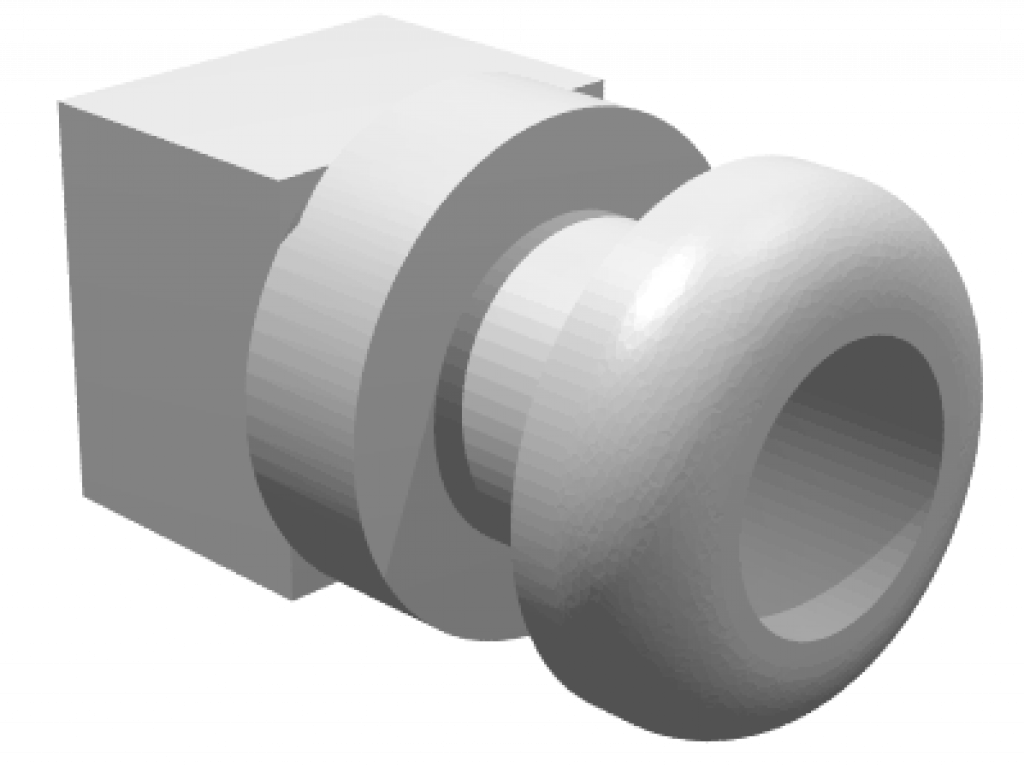
The sample order was finalized and paid for and right now the 1000 springs are on it's way to Mallorca. I hope to receive these just before Xmas - a better Christmas present I cannot wish for as I am dying to test if it works and whether or not I have to make adjustments to the design.
In the meantime I have contacted companies who do injection molding for the small plastic cap that goes inside the square aluminum tube and later inside the wooden cubes. Like with paper printing, the price goes down if the volume increases. But with injection molding it's more in relation to how many units are being molded in one production cycle. The more caps per injection mold, the lower the cost per unit. But.... the price of the aluminum mold goes up with factor 2 if you double the number of units. And the price of custom made fabrication of this mold are high and start with a few thousand euros. For a mold containing 10 of these caps the price will be around €10,000. In order to decide to spend this amount of money, I need to know quite sure if this project will succeed. But this is something you can't know. So either I go for it or not.
In the next blog post I will continue to write about this exciting project. The final idea is to have a kind of Lego system which enables me to create 3D structures in minutes. What I need is just the wooden cubes with holes in it, aluminum tubes with those caps, that's it.
For now: have a nice weekend and if my next post will not be published before Christmas: have a Merry Christmas !



